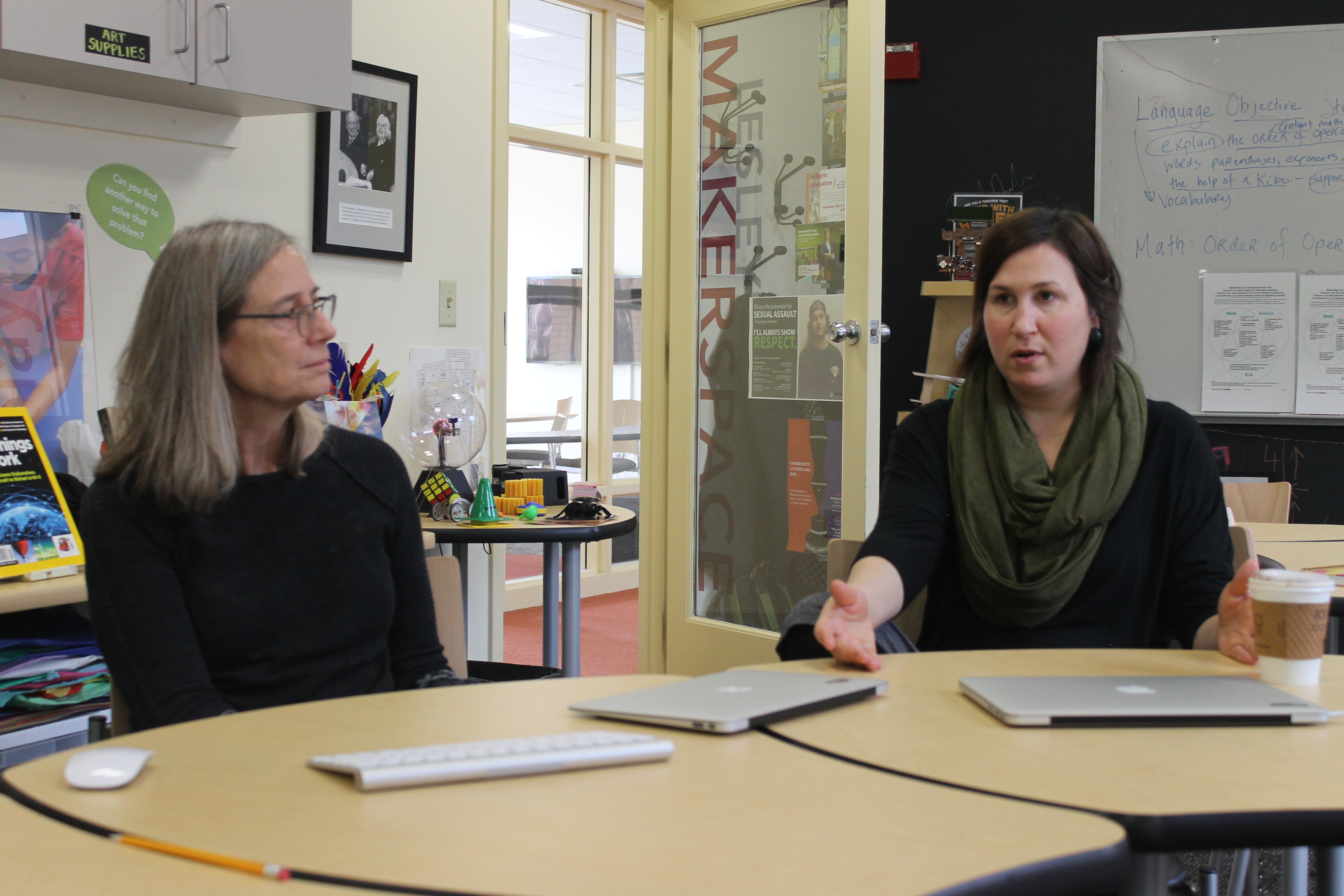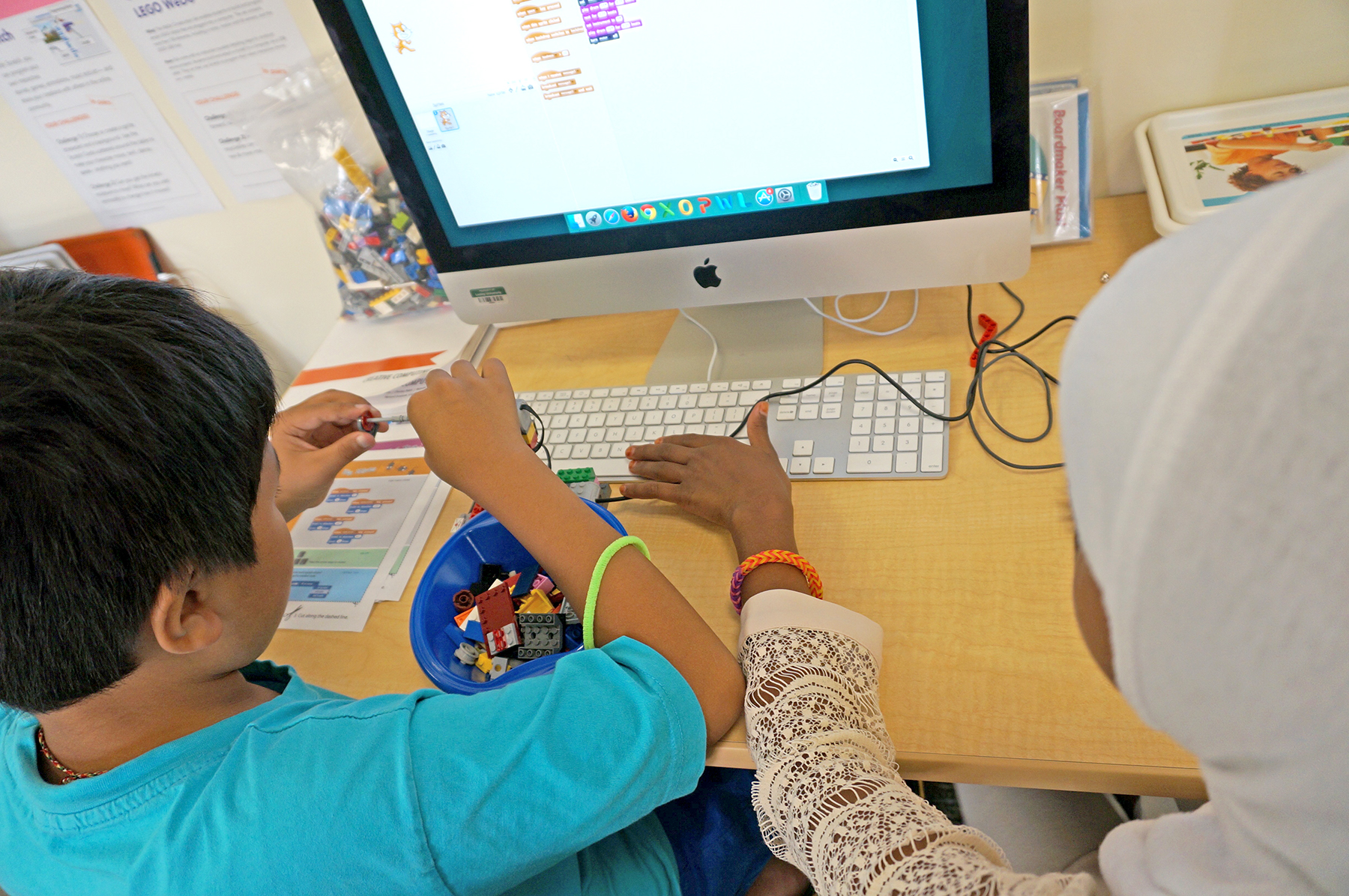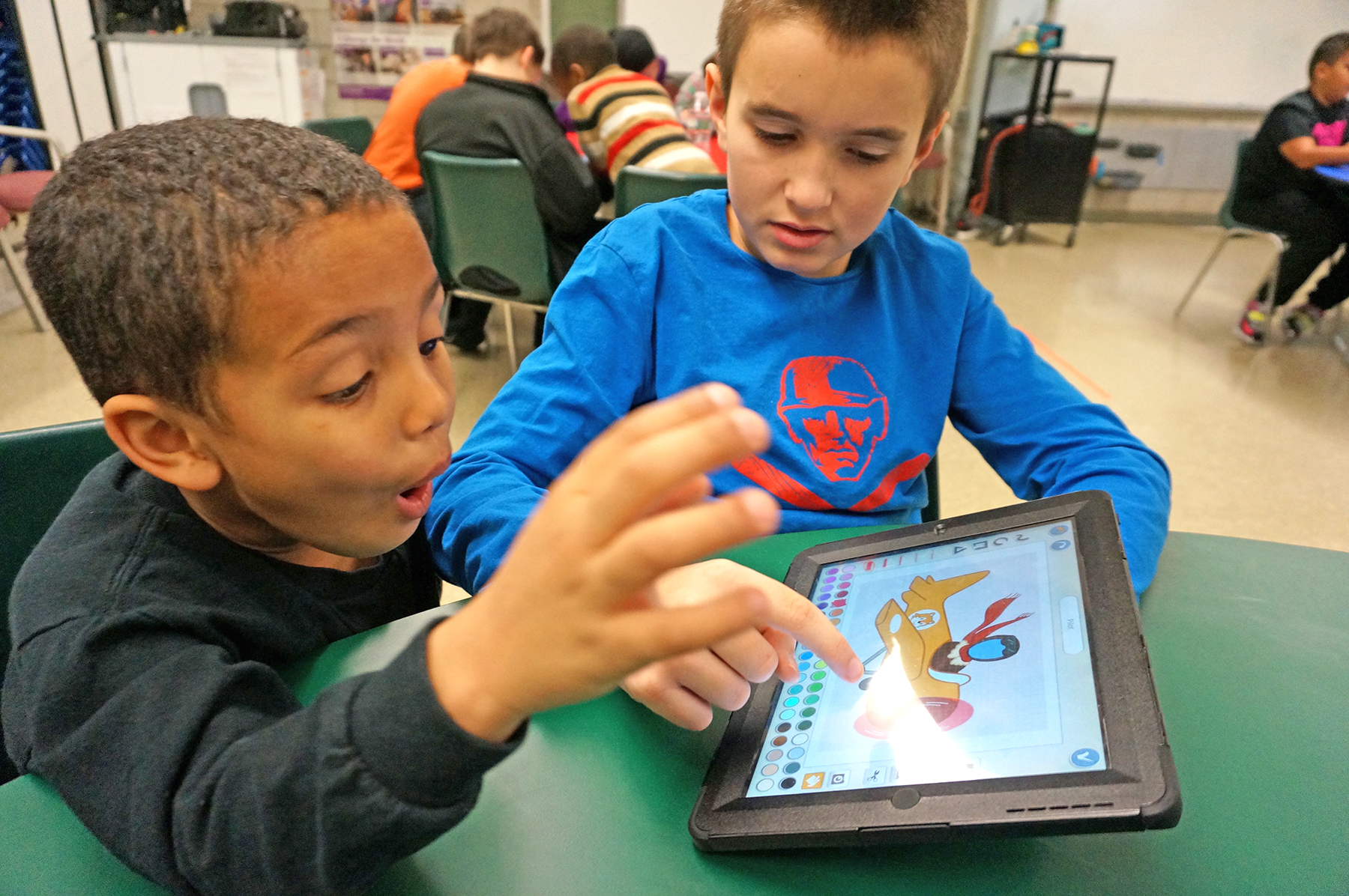Empowerment and Equity Through Making and Scratch
By Mary Adelaide, ScratchEd Intern
For Lesley University’s Sue Cusack and Jacy Edelman, Scratch is one piece of a broader effort centered around empowering students and improving equity. Sue and Jacy run workshops for education students at Lesley University out of the institution’s makerspace, and they also work closely with schools in the Boston and Cambridge area to create makerspaces and support teachers in bringing innovation to their classrooms. Both educators think strategically about how teachers can engage their students and bring out previously hidden strengths.

Sue and Jacy aim to give teachers the confidence and skills to help students be more in charge of their education and engage in learning as a social activity. They want to see teachers articulate clear learning outcomes, but say teachers shouldn’t worry about having a full mastery of tools like Scratch before bringing them into the classroom. In fact, it’s good news if the teacher doesn’t have the answer to a question – there will probably be a student who can help.
“If their kids can figure it out, they actually don’t need to know it,” Sue explained. “We need their wisdom as teachers about what they’re going after and what those learning outcomes look like.”

Approaching Scratch from an inquiry-based mindset means that teachers can guide students in finding the answers they need, drawing on peers’ ideas and online resources.
“That’s what Scratch is all about,” Jacy said. “If we can’t figure it out in this classroom with everyone working together, let’s go look at someone else’s project and see what they did. It’s not about stealing their project, but rather getting inspiration from the code that they created, and then tweaking it, remixing it, and making it your own. It’s important for knowledge and learning to be shared among others.”
Sue sees sharing among students as a way to help them learn new approaches from each other, giving those who might be struggling a chance to catch up.
“However you want to frame it, some kids are hardwired with strategies that are more effective than some other kids,” she pointed out. “If we engage in the process of out-loud thinking, that will ramp up kids who don’t come hardwired with that cache of strategies. That will help them build them. I think it is entirely possible to tip the scales on who is successful and who is not being successful.”
Working together and learning from each other is critical for teachers as well as for students. Jacy has often seen teachers share pioneering work they’re doing and their colleagues, despite admiring those innovations, say they can’t bring them into their own classrooms because it would be copying. In their interactions with teachers, Sue and Jacy hope to foster a culture of collaborating with each other, so that they can really benefit from each other’s advances.
When early adopters bring exciting tools, projects, and strategies into their classrooms, it can create a helpful sense of peer pressure for others to take up similar efforts. Sue said they try to create an environment where teachers doing good work are visible, and where there are clear pathways for other teachers to follow.
Sue and Jacy feel the hardest part of a tool like Scratch is getting teachers started with it. The idea of coding can sound intimidating. But once students open up Scratch, receive a prompt or two, and start coming up with solutions, their ability to understand and engage with the platform become obvious.
“Kids always surprise us, and in a really positive way,” Sue said. “We don’t think kids have a problem with this – we think adults have a problem with this.”
She added, “It’s our belief that the students, once they get started, can really own this. We try to model that when kids are working, you need to give them space to learn, talk to each other, figure it out, mess up – that’s good – and keep going.”
As part of promoting student ownership, Sue and Jacy encourage teachers to assign the role of “tech leader” (involving activities like turning off and putting away tech tools) to a student who typically isn’t at the top of the class. That responsibility can give the student a chance to get involved, show their strengths, and potentially redefine their place in the classroom. It’s one step toward the overall goal of “letting the teacher step back and the students step forward,” as Jacy put it.

Another form of collaboration comes through harnessing the knowledge of parents in the school community and giving them a way to share that with students. At the Kennedy School, a public K-8 school in Somerville, Massachusetts, the opening of a makerspace prompted parents to launch their own after school program. Parents have also started leading clubs around specific interests like stop motion animation and augmented reality. Students across the school are thus able to benefit from the expertise of parents who have worked with many of the major tech companies in the Boston area.
According to Sue, the makerspace “was a big spark for the parents, because there were quite a few with extraordinary competencies who only had one class as a point of entry. Now they’ve got the whole K through 8. It’s really cool to see them respond.”
While Sue and Jacy are involved in after school programs, their core mission is to integrate effective activities, tools, and approaches into the school day and ensure they are aligned with standards. Their advocacy is backed by the understanding that after school activities will inevitably leave out some students. For their work to promote equity, all students need access to it.
“It’s not that we don’t support after school, but if you look at it from a social justice perspective, it has to happen in the school day. Period,” Sue said. “All means all.”
Educators are invited to explore and tinker in the Lesley makerspace on the first Tuesday of every month, from 3-5 p.m. Learn more here: http://steam.lesley.edu/

